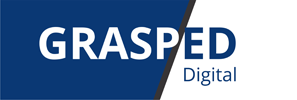Chances are that at some point, you’ve been on the receiving end of personalized marketing campaigns. So, you probably already know how persuasive they can be.
But in case you haven’t, here are some examples of successful personalized strategies that I hope inspire you:
Amazon:
Amazon pioneered personalized web experiences in the early 2010s with its “customers also bought” widget.
It uses a combination of technologies like predictive analytics, artificial intelligence, and machine learning to create a tailored experience for every user.
Their systems customize the content of your home page to recommend items that you might be interested in. They also serve widgets of similar items while browsing.
These personalization strategies all work together to give you information you need. It’s a convenient user experience that makes online shopping much easier.
Netflix:
Netflix’s Recommendation Engine uses data like user demographics, browsing behavior, and watch history to build a detailed profile of the user.
Each profile is then matched with some of Netflix’s 70,000 or so “alt-genres” (which is how Netflix breaks down genres, tropes, and determines similar titles).
Spotify:
Another popular recommendation engine is Spotify.
Like Netflix, Spotify uses all its data to feed machine learning models that identify patterns between all the content on Spotify.
These patterns help Spotify offer intelligent recommendations based on both abstract and objective markers like mood, time, location, and ambience.
Spotify is also well known for its year-end “Wrapped” playlists. Wrapped repackaged users’ data into a personalized playlist and shareable infographics for social media.
The shareable infographics were a huge hit with users, many found their listening history intriguing and wanted to share it with their friends.
By sharing and discussing on social media, non-users were also enticed to join Spotify.
Starbucks:
Starbucks uses detailed user profiles from their app to run a personalized rewards system.
Like other recommendation engines, Starbucks uses historic purchase data, location, weather, and other data markers to feed an algorithm that pushes personalized offers via email and the Starbucks app.
Note how most personalized strategies straddle different channels like email, website, and social media. You’ll want to prioritize the channels your customers are on.
All the companies in our examples include personalized marketing throughout different areas of their business, and sales funnel, rather than just one segment.
This includes email, website and interface, social media and even geolocation.
When it comes to personalized marketing strategies, there’s no one-size-fits-all. It’s important that you take a targeted approach with clear goals and objectives.

